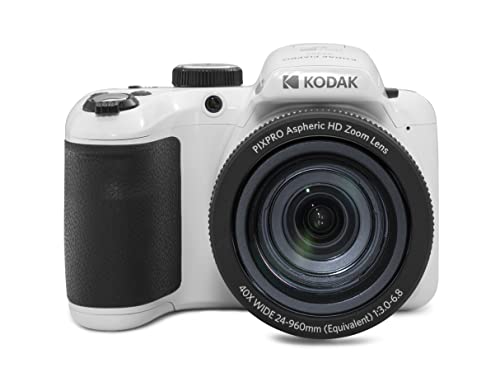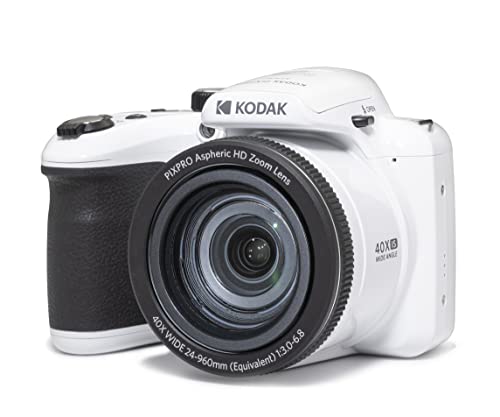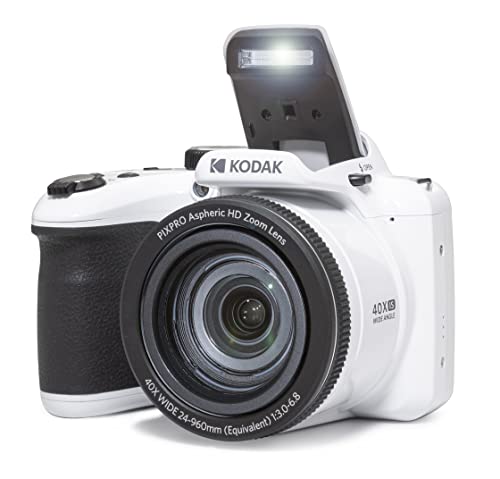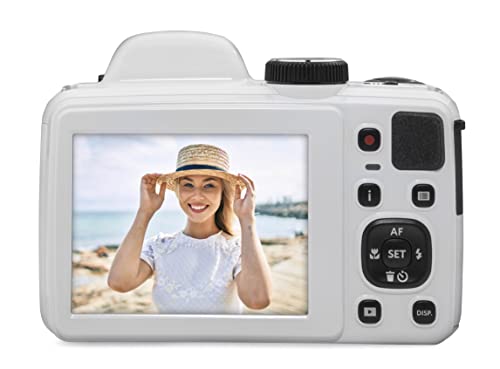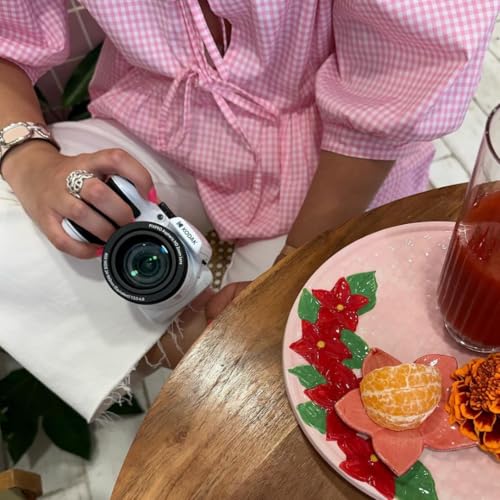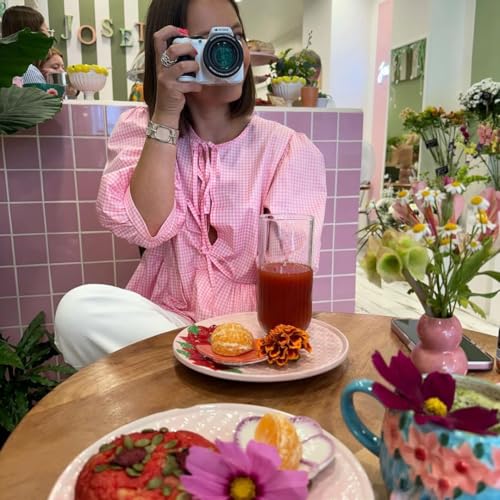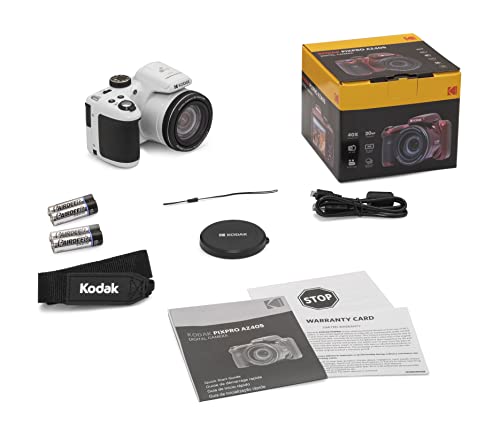

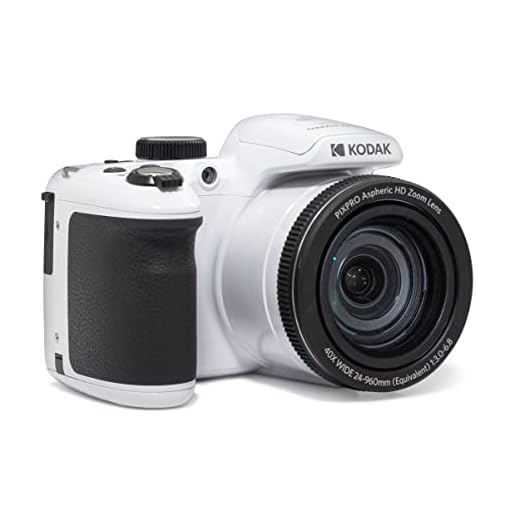


As an architecture photographer, I understand the importance of having the right tools to capture the details, lines, and textures of buildings. When it comes to digital cameras, there are several options that can provide exceptional image quality and versatility for architectural photography.
One of the top choices for architectural photographers is the Sony Alpha a7R IV. This mirrorless camera features a full-frame 61-megapixel sensor, allowing for incredibly detailed shots. Its dynamic range is impressive, making it ideal for capturing both bright highlights and shadows. Additionally, the Alpha a7R IV offers excellent low-light performance, thanks to its ISO range of 100-32000.
Another popular option among architectural photographers is the Canon EOS 5DS R. This DSLR camera boasts a whopping 50.6-megapixel sensor, delivering stunning high-resolution images. The 5DS R also features an anti-aliasing filter cancellation, allowing for even sharper details to be captured in architectural shots. Its dual DIGIC 6 image processors ensure fast performance and minimal noise.
For those looking for a more budget-friendly option without compromising on image quality, the Nikon D850 is an excellent choice. This DSLR camera offers a 45.7-megapixel sensor and a wide ISO range of 64-25600. The D850 is known for its exceptional dynamic range, allowing for detailed shots in various lighting conditions. It also features a tilting touchscreen, which is convenient for capturing unique angles.
Ultimately, the best digital camera for architectural photography will depend on your specific needs and preferences. However, these top options provide excellent image quality and performance, making them some of the best tools for capturing the beauty and intricacies of architecture.
Understanding the importance of choosing the right camera for architectural photography
As a professional architectural photographer, I know how crucial it is to choose the right camera for capturing the intricate details and unique features of buildings. The camera you use can greatly impact the quality and clarity of your photographs, ultimately determining how well you showcase the architectural design and capture the essence of the space.
Resolution and image quality are two key factors to consider when selecting a camera for architectural photography. A camera with a high resolution will allow you to capture fine details and produce sharp, clear images. Additionally, a camera with excellent image quality will ensure that your photographs accurately represent the colors, textures, and tones of the architecture, enhancing the overall visual impact.
Wide angle capabilities are also important for architectural photography, as they allow you to capture the entire building or space in a single frame. A camera with a wide-angle lens or the ability to attach one will enable you to showcase the full scope of the architecture, helping viewers understand the scale and dimensions of the structure.
Low light performance is another essential feature to consider. Many architectural photography opportunities arise during twilight or in low-light conditions, and having a camera that can handle these environments will allow you to capture stunning shots with minimal noise and high detail.
Lastly, ease of use and versatility should also be taken into account. As a photographer, you need a camera that is intuitive and user-friendly, allowing you to quickly and efficiently capture images. Additionally, having a camera that offers various shooting modes and manual controls gives you the freedom to experiment with different settings and techniques, ultimately enhancing your creative possibilities.
Overall, choosing the right camera for architectural photography is essential for producing high-quality images that effectively showcase the architecture. By considering factors such as resolution, image quality, wide angle capabilities, low-light performance, and ease of use, you can ensure that your camera aligns with your specific needs and allows you to capture the beauty and uniqueness of architectural designs.
Top features to consider in a camera for architectural photography
As a photographer specializing in architectural photography, I’ve learned that certain features in a camera can significantly enhance the quality of my images. Here are some of the top features to look for when choosing a camera for architectural photography:
High-resolution sensor
Architectural photography often requires capturing intricate details and capturing the full scale of a building or structure. A camera with a high-resolution sensor allows you to capture these details with clarity and precision. Look for a camera with a sensor that has at least 24 megapixels or higher for the best results.
Wide-angle lens compatibility
A wide-angle lens is essential for capturing the vastness and grandeur of architecture. Look for a camera that is compatible with a variety of wide-angle lenses, as this will give you the flexibility to choose the lens that best suits the specific architectural subject you are photographing. Whether it’s an ultra-wide lens for capturing expansive interiors or a tilt-shift lens for correcting perspective, having lens compatibility is crucial.
Dynamic range
Architectural photography often involves capturing scenes with a wide range of lighting conditions, from bright exteriors to dimly lit interiors. A camera with a good dynamic range can handle these challenging lighting situations by capturing a wide range of tones, from shadows to highlights, without losing detail. Look for a camera with a high dynamic range to ensure you can capture the full tonal range of architectural subjects.
Tilt-shift capability
Tilt-shift lenses are commonly used in architectural photography to correct perspective distortion and ensure straight lines. Some cameras have built-in tilt-shift capabilities, allowing you to make these adjustments in-camera without the need for additional lenses. If you plan on shooting a lot of architecture, having this feature built into your camera can save you both time and money.
Image stabilization
When photographing buildings and structures, it’s not always possible to use a tripod. In these situations, having image stabilization in your camera can help reduce the effects of camera shake, resulting in sharper images. Look for a camera with in-body image stabilization (IBIS) or lens-based stabilization, depending on your preference and lens collection.
- High-resolution sensor for capturing intricate details
- Wide-angle lens compatibility for capturing the vastness of architecture
- Dynamic range to handle a wide range of lighting conditions
- Tilt-shift capability for correcting perspective distortion
- Image stabilization for sharper handheld shots
By considering these features when choosing a camera for architectural photography, you can ensure that you have the necessary tools to capture stunning images of buildings and structures.
High resolution sensors: Capturing every detail in architectural photography
As a professional architectural photographer, I understand the importance of capturing every intricate detail in my shots. That’s why having a high resolution sensor in a digital camera is crucial for achieving stunning images that truly showcase the beauty and complexity of architectural design.
A high resolution sensor allows me to capture even the smallest elements of a building, from the fine texture of the materials used to the intricate patterns in the facade. With more pixels packed into the sensor, every tiny detail becomes clear and sharp, resulting in images that are rich in detail and incredibly lifelike.
But why is the resolution of the sensor so important in architectural photography?
- The ability to zoom in and crop: With a high resolution sensor, I can capture the entire building in the frame and still have the flexibility to zoom in and crop specific areas without sacrificing image quality. This is particularly useful when I want to highlight certain architectural features or create different compositions from a single shot.
- Printing large-scale photographs: Architectural photographs are often used for promotional materials, exhibitions, and publications. Having a high resolution sensor ensures that I can produce high-quality, large-scale prints that retain all the details and clarity.
- Post-processing capabilities: A high resolution sensor provides more data to work with during post-processing. This gives me greater flexibility to adjust exposure, colors, and details while maintaining the overall quality of the image. It also allows me to create high-resolution panoramas by stitching together multiple images seamlessly.
- Future-proofing: Technology is constantly evolving, and having a camera with a high resolution sensor ensures that I am prepared for advancements in display technology. Higher resolution screens are becoming more common, and having images with a higher pixel count means they will still look great and be relevant in the future.
In conclusion, a high resolution sensor in a digital camera is indispensable for capturing every detail in architectural photography. It provides the ability to zoom in and crop, produce large-scale prints, enhance post-processing capabilities, and future-proof my work. With a camera equipped with a high resolution sensor, I can create stunning images that truly do justice to the art and craftsmanship of architectural design.
Wide dynamic range: Preserving highlights and shadows
When it comes to architectural photography, one of the most important factors to consider is the camera’s ability to capture a wide dynamic range. A wide dynamic range allows you to preserve the details in both the highlights and shadows of a scene, ensuring that no important elements are lost or overexposed.
Having a camera with a wide dynamic range is crucial when photographing architectural subjects due to the high contrast situations often encountered. For example, when photographing a building with a bright sky in the background, a camera with a narrow dynamic range may struggle to capture both the sky and the building properly, resulting in blown highlights or underexposed shadows.
With a camera that offers a wide dynamic range, you have more flexibility in post-processing as well. You can easily recover details from shadows or highlights that may have been lost in the initial capture, allowing you to create a final image that accurately represents the architectural subject.
When choosing a camera for architectural photography, look for features such as a high megapixel count, a low noise performance, and the ability to shoot in RAW format. These features will contribute to a wider dynamic range, ensuring that you can capture and preserve all the details in your architectural shots.
- High megapixel count: A higher megapixel count allows for more detail to be captured, especially in areas with subtle tonal variations.
- Low noise performance: Low noise performance is essential for maintaining image quality, particularly in low light situations where noise can be more pronounced.
- RAW format: Shooting in RAW format gives you more flexibility in post-processing, allowing you to recover details and adjust the exposure without sacrificing image quality.
By selecting a camera that excels in these areas, you’ll be well-equipped to capture stunning architectural photographs with a wide dynamic range, preserving the highlights and shadows that make your images truly impactful.
Tilt-shift lenses: Enhancing perspective control in architectural photography
As an architectural photographer, I have come to appreciate the importance of perspective control in capturing the true essence of a building. One of the most effective tools I have found for this purpose is the tilt-shift lens.
A tilt-shift lens allows me to manipulate the plane of focus and correct for converging lines, resulting in images that closely resemble how the human eye perceives the scene. This lens offers precise control over perspective, making it an invaluable asset when photographing architectural structures.
Adjusting the plane of focus:
With a tilt-shift lens, I can tilt and shift the lens elements independently, allowing me to control the plane of focus. By tilting the lens, I can adjust the angle of the plane of focus, bringing both the foreground and background into sharp focus. This is particularly useful when capturing interior spaces, where keeping the entire room in focus is often desired.
Correcting converging lines:
Architectural structures often have vertical lines that converge when photographed from certain angles. This distortion can detract from the beauty and symmetry of the building. However, with a tilt-shift lens, I can shift the lens elements vertically or horizontally to correct these converging lines. This allows me to maintain the integrity of the building’s design and capture it accurately.
Other benefits:
In addition to perspective control, tilt-shift lenses also offer other benefits for architectural photography. They typically produce exceptionally sharp images and minimal distortion, resulting in highly detailed and accurate representations of the subject. Furthermore, the ability to control the plane of focus allows me to create unique and artistic effects, such as selective focus on specific architectural details.
In conclusion, tilt-shift lenses are essential tools for any architectural photographer looking to enhance perspective control in their images. These lenses offer the precision and flexibility needed to accurately capture the beauty and intricacies of architectural structures.
The Best Digital Cameras for Architectural Photography in 2021
As a professional architectural photographer, having the right equipment is essential to capture the beauty and intricacies of buildings and structures. In 2021, there are several digital cameras that stand out in terms of their features and capabilities, making them the top choices for architectural photography.
One of the best digital cameras for architectural photography in 2021 is the Canon EOS R5. This full-frame mirrorless camera boasts a high-resolution sensor, excellent dynamic range, and advanced autofocus capabilities, allowing photographers to capture every detail with precision. Its unique architecture-focused features, such as the Perspective Control tool and Flicker Detection, make it a versatile and reliable option for architectural photography.
Another top contender is the Nikon D850. With its 45.7-megapixel sensor and impressive low-light performance, this DSLR camera offers exceptional image quality for architectural photography. The D850 also provides a tilting LCD screen, which is a useful feature when shooting at different angles, and its extensive range of lenses allows photographers to capture different perspectives and compositions.
- Canon EOS R5: A full-frame mirrorless camera with advanced autofocus and architecture-focused features.
- Nikon D850: A high-resolution DSLR camera with excellent image quality and a tilting LCD screen.
For those looking for a more budget-friendly option, the Sony Alpha A7 III is a camera worth considering. This mirrorless camera offers a 24.2-megapixel sensor, 5-axis image stabilization, and a wide ISO range, making it suitable for various lighting conditions. It also has a compact and lightweight design, making it easy to carry around when photographing architecture on the go.
In conclusion, the Canon EOS R5, Nikon D850, and Sony Alpha A7 III are among the best digital cameras for architectural photography in 2021. Each of these cameras offers unique features and capabilities that cater to the specific needs of architectural photographers. Whether you prefer a mirrorless camera or a DSLR, there is a suitable option available to help you capture stunning architectural shots.
Nikon D850: The ultimate camera for professional architectural photographers
As a professional architectural photographer, I am always on the lookout for the best digital camera that can capture the intricate details, textures, and lines of buildings with exceptional clarity and precision. After experimenting with various camera models, I have found that the Nikon D850 stands out as the ultimate choice for architectural photography.
One of the most impressive features of the Nikon D850 is its high resolution sensor, boasting a staggering 45.7 megapixels. This allows me to capture images with an incredible level of detail, enabling me to showcase the fine nuances of architectural elements such as intricate brickwork, ornate carvings, and delicate glasswork. The sensor’s exceptional dynamic range also ensures that I can capture both highlights and shadows accurately, resulting in images that accurately represent the true atmosphere of the architectural space.
In addition to its impressive sensor, the Nikon D850 also offers a wide range of advanced features that enhance my workflow as an architectural photographer. Its tilting LCD touchscreen, for example, allows me to easily compose and adjust my shots from different angles, even when shooting from awkward positions or in tight spaces. The camera’s fast autofocus system and high-speed continuous shooting capabilities ensure that I never miss a moment, even during fast-paced architectural shoots where capturing multiple angles and perspectives is crucial.
Overall, the Nikon D850 has proven to be the ultimate camera for professional architectural photographers like myself. Its high resolution sensor, advanced features, and exceptional image quality make it the perfect tool for capturing the beauty and intricacy of architectural designs with precision and artistry.
Canon EOS 5DS R: Delivering stunning image quality for architectural photography
When it comes to architectural photography, image quality is of the utmost importance. As a professional architectural photographer, I rely on the Canon EOS 5DS R to capture the intricate details and textures of buildings with exceptional clarity and sharpness.
The Canon EOS 5DS R features a full-frame 50.6 megapixel sensor, which is the highest resolution sensor currently available in a DSLR camera. This allows me to capture every minute detail of a building, from the intricate patterns on the exterior to the fine lines and textures of the interior. The camera also has a low-pass cancellation filter, which further enhances the sharpness and detail of the images.
One of the standout features of the Canon EOS 5DS R is its advanced autofocus system. With 61 autofocus points, including 41 cross-type points, I can easily and accurately focus on specific areas of a building, ensuring that every detail is captured in sharp focus. The camera also has a built-in time-lapse movie function, which allows me to create stunning time-lapse videos of architectural projects.
Another advantage of the Canon EOS 5DS R is its impressive dynamic range. With its high-resolution sensor and advanced image processing capabilities, the camera is able to capture a wide range of tones and colors, from the bright highlights to the deep shadows. This allows me to capture the true beauty and atmosphere of architectural spaces, even in challenging lighting conditions.
In addition to its exceptional image quality, the Canon EOS 5DS R also offers a robust and ergonomic design, making it a pleasure to use for long shooting sessions. Its weather-sealed construction provides durability and protection against the elements, allowing me to confidently shoot in various weather conditions. The camera also offers a variety of customizable options and controls, allowing me to tailor the settings to my specific shooting preferences.
- The Canon EOS 5DS R delivers stunning image quality with its high-resolution sensor and low-pass cancellation filter, capturing every detail of a building with exceptional clarity and sharpness.
- Its advanced autofocus system and time-lapse movie function allow for precise focusing and creative video capture.
- The camera’s impressive dynamic range enables the capture of a wide range of tones and colors, resulting in images that accurately represent the atmosphere and beauty of architectural spaces.
- The Canon EOS 5DS R features a robust and ergonomic design, with weather-sealing for durability and customizable options for a personalized shooting experience.
Sony Alpha a7R IV: Combining high resolution and versatility for architectural photography
As a professional architectural photographer, I understand the importance of capturing every detail and capturing the essence of a building. That’s why I rely on the Sony Alpha a7R IV for my architectural photography needs. This camera combines high resolution and versatility, making it the perfect tool for capturing stunning images of buildings and structures.
The Sony Alpha a7R IV boasts an impressive 61 megapixel full-frame sensor, which allows me to capture incredibly sharp and detailed images. The high resolution sensor ensures that every intricate detail of a building, from the fine textures of the facade to the subtle nuances of the architectural design, is captured with utmost clarity. This is particularly important when photographing large buildings or architectural elements that demand precise and accurate representation.
Furthermore, the Sony Alpha a7R IV offers a wide range of features and settings that enhance my creative control and enable me to adapt to different shooting scenarios. The camera’s advanced autofocus system ensures fast and accurate focusing, even in low light conditions. This is essential when photographing interiors or shooting at twilight, where lighting conditions can be challenging. Additionally, the camera’s built-in image stabilization helps me achieve steady and sharp images, even when shooting handheld or in difficult shooting positions.
Another feature that sets the Sony Alpha a7R IV apart is its exceptional dynamic range. This allows me to capture a wide range of tones, from deep shadows to vibrant highlights, in a single image. This is crucial when photographing buildings, as it allows me to retain the contrast and tonal details in both the exterior and interior of a structure. The camera’s 15-stop dynamic range ensures that I can produce true-to-life and visually captivating images.
In conclusion, the Sony Alpha a7R IV is an outstanding camera for architectural photography. Its high resolution sensor, versatile features, and exceptional dynamic range make it the perfect tool for capturing the beauty and intricacy of buildings. Whether I am photographing a historic landmark or a modern skyscraper, this camera delivers extraordinary results and enables me to showcase architecture in all its glory.
Budget-friendly options for architectural photography
As an architectural photographer on a budget, it can be challenging to find the right camera that meets your needs without breaking the bank. However, there are several budget-friendly options available that can still deliver excellent results.
One option to consider is the Nikon D3500. This entry-level DSLR camera offers a high resolution (24.2 megapixels) and a user-friendly interface, making it an ideal choice for beginners in architectural photography. It also boasts good low-light performance and the ability to capture detailed images with its 11-point autofocus system.
- Canon EOS Rebel T7i: Another budget-friendly option is the Canon EOS Rebel T7i. With a 24.2-megapixel sensor and DIGIC 7 image processor, this camera produces high-quality images with excellent color reproduction. It also features a vari-angle touchscreen LCD, allowing for easy composition and navigation.
- Sony Alpha a6000: The Sony Alpha a6000 is a mirrorless camera that offers impressive performance at an affordable price. It comes with a 24.3-megapixel APS-C sensor, fast autofocus, and continuous shooting at 11 frames per second. Additionally, it has built-in Wi-Fi and NFC, making it convenient for sharing images on the go.
- Fujifilm X-T200: If you prefer a compact and lightweight option, the Fujifilm X-T200 is worth considering. This mirrorless camera features a 24.2-megapixel APS-C sensor, 4K video recording, and a fully articulating touchscreen. It also offers a wide range of film simulation modes, allowing you to experiment with different looks and styles.
When it comes to architectural photography, it’s important to choose a camera that suits your needs and budget. These budget-friendly options provide a good starting point for photographers looking to capture stunning architectural images without breaking the bank.
Fujifilm X-T4: Affordable excellence for architectural photography
When it comes to architectural photography, having a capable camera that can capture the intricate details and wide dynamic range of buildings is essential. The Fujifilm X-T4 is a camera that offers both affordability and excellence, making it an ideal choice for architectural photographers.
The X-T4 features a 26.1-megapixel APS-C X-Trans CMOS 4 sensor, which delivers stunning image quality with rich details and accurate colors. The camera also boasts an ISO range of 160-12800, expandable up to 80-51200, allowing photographers to capture sharp and noise-free images even in challenging lighting conditions. Additionally, the X-T4 has a 5-axis in-body image stabilization system, which reduces camera shake and ensures crisp images when shooting handheld.
One of the standout features of the X-T4 for architectural photography is its tilting touchscreen LCD. This allows photographers to easily compose shots from various angles, whether they’re shooting from low angles or above eye level. The touchscreen functionality also makes it easy to adjust settings and navigate through menus, providing a seamless shooting experience.
Another advantage of the X-T4 is its burst shooting capabilities. With a continuous shooting speed of up to 15 frames per second, photographers can capture the fast-paced movement of people or vehicles in architectural shots. This is especially useful for capturing the lively atmosphere of urban environments or the dynamic design elements of modern buildings.
Overall, the Fujifilm X-T4 offers affordable excellence for architectural photography. Its high-quality image sensor, image stabilization system, tilting touchscreen LCD, and burst shooting capabilities make it an excellent choice for both amateur and professional architectural photographers. Whether you’re capturing the grandeur of historical landmarks or the sleek lines of contemporary architecture, the X-T4 is a reliable companion that delivers outstanding results.
Best digital cameras for architectural photography
Features
| Part Number | 5811C012 |
| Model | 5811C012 |
| Warranty | 1 year manufacturer |
| Color | Black |
| Release Date | 2023-03-16T00:00:01Z |
| Price history for Canon EOS R50 Mirrorless Camera Kit | |
|---|---|
|
Latest updates:
|
|
Features
| Model | W08 |
| Color | YL15-W08-C-Black |
| Is Adult Product |
Features
| Part Number | AZ405-WH |
| Model | AZ405-WH |
| Warranty | 1 year manufacturer |
| Color | White |
| Release Date | 2022-11-05T00:00:01Z |
| Language | English |
| Price history for KODAK PIXPRO AZ405 Digital Camera | |
|---|---|
|
Latest updates:
|
|
Features
| Part Number | DC101 |
| Model | DC101 |
| Warranty | 1 |
| Color | Black |
Features
| Part Number | 0582C002-cr |
| Model | 5DS R |
| Warranty | 90 days limited warranty |
| Color | Black |
| Price history for Canon EOS 5DS R Digital SLR | |
|---|---|
|
Latest updates:
|
|
Question and answers:
What are the best digital cameras for architectural photography?
Some of the best digital cameras for architectural photography include the Canon EOS 5D Mark IV, the Nikon D850, and the Sony A7R III. These cameras have high resolution sensors, excellent image quality, and advanced features that are well-suited for capturing the intricate details and wide angles often found in architectural photography.
What makes the Canon EOS 5D Mark IV a good choice for architectural photography?
The Canon EOS 5D Mark IV features a 30.4 megapixel full-frame sensor, which allows for capturing detailed images with a wide dynamic range. It also has a high-resolution LCD screen for reviewing images, a fast and accurate autofocus system, and the ability to shoot in low light conditions. These features make it a great choice for architectural photographers looking for a versatile and reliable camera.
Why is the Nikon D850 recommended for architectural photography?
The Nikon D850 is a popular choice for architectural photography due to its 45.7 megapixel sensor, which produces incredibly detailed images. It also has a wide ISO range, allowing for great low-light performance, and a high dynamic range, ensuring accurate exposure in challenging lighting conditions. Additionally, the D850 offers a variety of useful features such as a tilting touchscreen, robust image stabilization, and excellent autofocus capabilities.
















